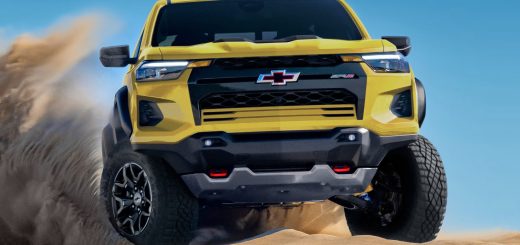Chevrolet doesn’t operate in South America the same way it does everywhere else. There is a strong demand for budget compact cars in the market, which has prompted the bowtie to offer a multitude of seemingly overlapping models plucked from various times in its recent history. Jalopnik recently did a deep dive on different Chevy models offered in Uruguay, which ended up with them realizing how weird the company’s operations in the country are.
The strangest thing about Chevrolet in South America is the confusing amount of compacts which all ride on various General Motors platforms. Uruguay gets five different Chevrolets based on GM’s Gamma II platform. There’s the Sonic, the foreign-market Cobalt, the Onix and Prisma, the Spark GT and the Sail.
Enough hatchbacks for you? Well for Latin America it’s not, because there is also the non- GT spark, which is based on a second-generation Daewoo Matiz, and the Celta, which uses GM’s Gamma I platform that has also underpinned cars like the Opel Corsa A and B. It doesn’t stop there, either. The current Delta II-based Chevrolet Cruze is also sold in Latin American markets in both hatchback and sedan variants.
GM also sells trucks and SUVs in South America riding on its older platforms and models. The Captiva Sport is sold there, which used to be sold here badged as the Saturn Vue and is still sold in Europe as the Opel Antara and in Australia as the Holden Captiva. The Brazilian-designed Spin, which Jalopnik points out bears a small resemblance to the Chevrolet Orlando, is also offered in South America. Then there’s its two trucks, the S-10 and the Montana. The S-10 is Chevy’s global Colorado model, (not the new Colorado for North America), while the Montana looks a bit like a taller Holden Commodore Ute. The Montana is based on the Chevrolet Agile, which itself uses a modified Gamma II platform.
Last up is the Chevrolet N300, which is actually a rebadged van from GM’s Wuling joint venture called the Wuling Rongguan. It’s not entirely clear what the platform of the Rongguan started out life as, but after some research, Jalopnik concluded that the Rongguan may be a heavily revised version of the Mitsubishi Minicab, which Wuling previously bought the plans for and made the Wuling Dragon. They then took the Dragon platform and redesigned it so it was no longer a cab-over design to end up with the current Rongguan/N300.
There are multiple reasons Chevrolet sells so many budget compact models from old platforms in Latin American markets. Budget transportation is important in Uruguay and other similar markets and because safety standards aren’t what they are in North America, they can sell older models for a small price. Additionally, sales in South America are abysmal compared to North America and other markets, preventing Chevy from paying too much attention to some markets product-wise.















Comments
They’re ugly, very ugly. The Astek looks like a masterpiece compared to the Spin, Agile, Montana, Cobalt and the Trailblazer (aka grand spin).
Total waste of money. Makes me respect One Ford. Chevy could dominate South America with a modern lineup composed of new Chevy and Opel models.
Spin in silly when Zafira always gold that niche.
today is that cheap cars can be very beautiful, stylish and korrlaikud. I do not understand why it should be some kind of cheaper car too ugly. I do cheap cars just as beautiful, and to sell them a lot. ‘s not a very big difference between the robots and machine-made, ugly or beautiful car.
Allow me to make a clarification, all this ugly, low-cost and unsafe vehicles are only sold in countries of the Mercosur (Brazil, Argentina, Uruguay, Venezuela), which have proteccionist policies and import restrictions, unlike countries like Peru and Chile.